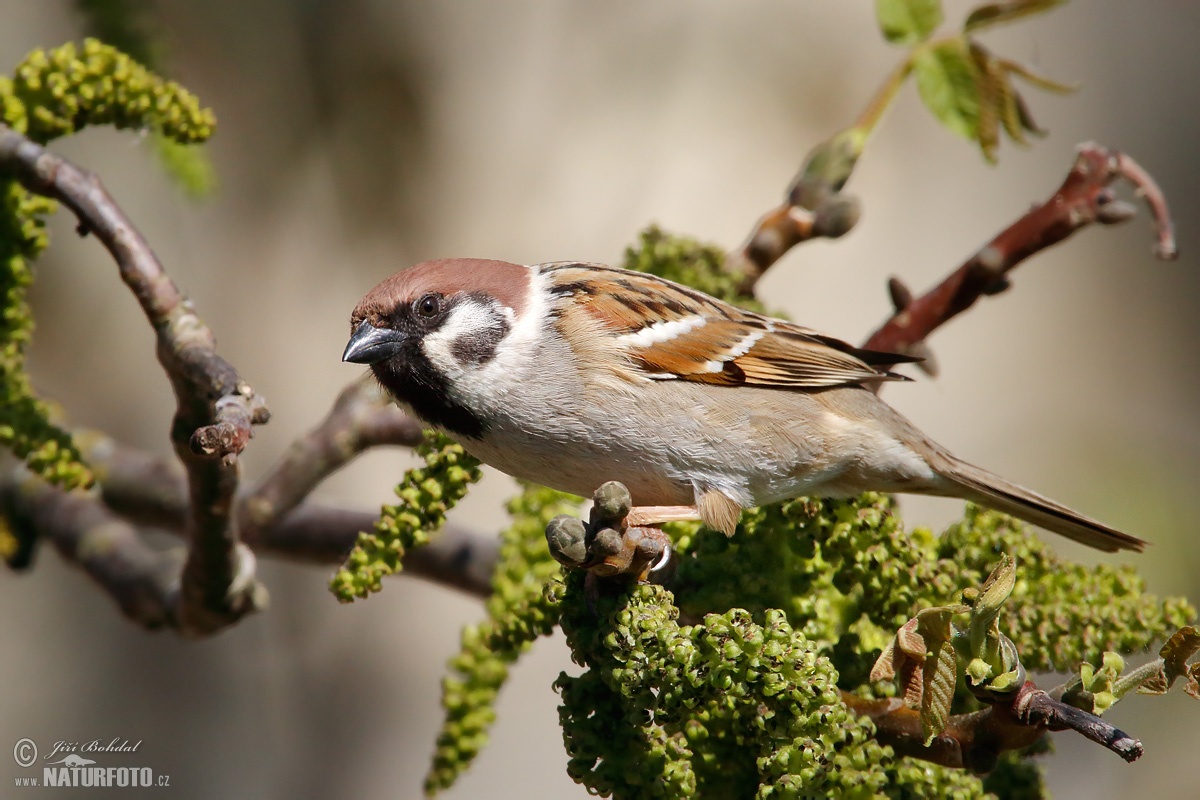

Though occasionally nesting in isolated trees, it is a gregarious bird at all seasons, and a grove of old trees with a plentiful supply of hollows, or a disused quarry, are favourite sites for the colony what it likes is a hole in which to put its untidy nest, composed of hay, grass, wool or other material and lined with feathers. Its voice is more shrill the call is a shorter chip, than the House Sparrow's and the song, consisting of modulated chirps, is musical. The small American population is sometimes referred to as "German Sparrows", to distinguish it from the native species as well as the vast numbers of " English" House Sparrows. In Australia, it is found in some rural and semi-rural districts, but not cities. It used to be considered as the national bird of the Philippines, and locally called maya. The Tree Sparrow is rural in Europe, but replaces its relative as a town bird in parts of Asia. They are said to be duller, and in the depicted young bird the face pattern is blurred. Young, even in the nest, closely resemble their parents. The legs are pale brown and the irides hazel. In summer the bill is lead-blue, in winter almost black.

Two distinct though narrow white bars cross the brown wings.
#Tree sparrow Patch#
The crown and nape are rich chestnut, and on the white cheeks and ear-coverts there is a triangular black patch the chin and throat are black. The sexes are practically alike, an important specific character. This 12.5–14 cm long bird is often confused with the larger House Sparrow, but its rich brown, almost coppery head, a black patch on its white cheeks, and a double white wing bar, together its slighter and more graceful build, are distinctive. Changes in farming methods have meant that species is declining in some parts of western Europe. From there, it has slowly expanded its range into Illinois and Missouri. In the United States (where it is known as the Eurasian Tree Sparrow to differentiate it from the native, unrelated American Tree Sparrow), German immigrants introduced it to the area around St. Millet and cereal grain are favoured food sources to feed on in winter.The Tree Sparrow, Passer montanus, is spread over most of Europe and Siberia, and allied forms occur in other parts of Asia. Hedges along watercourses will be favoured and additional height (above 3 metres) would be highly beneficial. Adopt a range of trimming styles and hedge types around the farm.Re-cut old willow pollards and consider erecting boxes in loose groups.Do not fell old trees unless they pose a direct safety concern. Protection of traditional nesting sites is important as tree sparrows nest in colonies.In spring and summer, field margins, conservation headlands and unimproved grasslands provide seeds for adults and insects for chicks.Field margins, winter stubbles and wild bird-seed crops (kale and quinoa preferred) provide winter seeds for adults. Aim to provide a year-round source of food.

“Tsuwitt”- A nasal, disyllabic and cheery tone. Boxes should be placed in groups within the same tree above head height and need a 2.8cm entrance hole. They nest in colonies in tree holes, willow pollards, farm buildings and nest boxes. Generally they have 2 to 3 broods each season. Tree Sparrows breed between April and early August. In the winter they will move onto stubbles, naturally regenerated areas and game cover.Īdults feed on small seeds and insects, whereas chicks are entirely dependent upon insects and spiders for the first two weeks of life. Tree sparrows prefer open farmland with well-spaced mature deciduous trees in hedges, isolated small woods or pollarded willows along slow flowing rivers, streams and ditches.


 0 kommentar(er)
0 kommentar(er)
